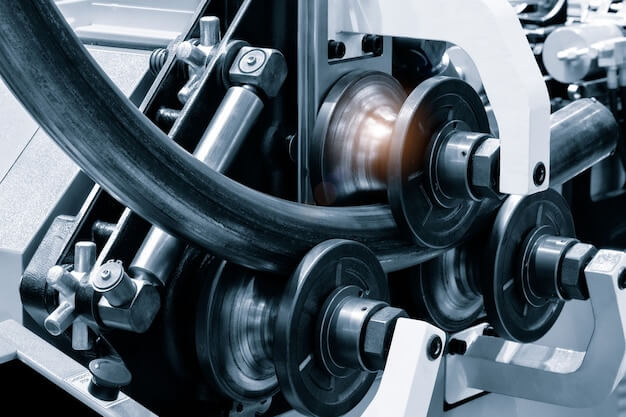Bead blasting is an integral process in the realm of Computer Numerical Control (CNC) machining, often used for finishing or cleaning metal components. In simple terms, bead blasting involves leveraging fine glass beads at high pressure against a surface to cleanse it or create a desired finish. This term has its roots deeply embedded in the field of mechanical engineering and manufacturing industries, offering substantial benefits that improve product quality.
At its core, CNC machining utilizes computer-controlled tools to produce parts from a broad range of materials accurately and efficiently. The importance of precision in CNC machining cannot be overstated, with techniques such as bead blasting utilized to ensure perfect surface finishes on completed parts.
The Process of Bead Blasting
Producing attritive yet decorative surfaces using bead blasting necessitates meticulous planning and execution. Broadly speaking, this technique follows a set procedure beginning with preparation, execution, and final cleanup.
During the preparation stage, the object targeted for blasting is thoroughly cleaned and cautiously placed inside the blast cabinet. Following the precautions meticulously helps shield those areas not earmarked for contact from potential damage. Next, using a nozzle attached to the blast-gun, pressurized air propels the glass beads out towards the target object. Each tiny speck strikes away minute particles, allowing you to obtain a clean and polished look. At last, once the blasting process concludes, the component receives another round of cleaning before proceeding with any further processing or inspection.
Benefits of Bead Blasting in CNC Machining
Bead blasting bestows several benefits upon the myriad materials intricately machined via avant-garde CNC techniques. Especially during the post-processing phase, bead blasting serves three crucial purposes – deburring, surface finishing, and cosmetic appearance enhancement.
Firstly, the gentle abrasion created by the glass beads effectively removes burrs or sharp edges generated during cutting or drilling processes, known as deburring. It helps ensure safety while handling and improves component fit in assemblies.
Secondly, bead blasting enables manufacturers to achieve particular texture or surface finishes on parts, enhancing their cosmetic appeal. Businesses that value aesthetics alongside functionality often rely significantly on bead blasting during CNC machining.
Lastly, it creates a uniformed matte finish that effectively cloaks tool marks, enhances the overall appearance of components, encourages paint adhesion, and eventually aids against corrosion by creating microdents where protective coatings can adhere more robustly.
The Prospects of Bead Blasting
While traditional bead blasting practices assisted industries for many years, contemporary developments integrate automated systems that further refine accuracy and repeatability. By marrying computer-aided controls with precision blast nozzles, businesses today exert an unparalleled command over their finishing processes. 
As industries continue embracing automation, there is a clearer shift towards techniques like CNC machining with built-in bead blasting capabilities. The exciting prospect about this trend envisions how disparate manufacturing techniques make space for integrating into a streamlined production process.
Indeed, bead blasting may be an older technique compared to its other contemporaries, but far from being outdated, it is continually evolving and refining its relevance in modern machineries’ context. Even as we delve deeper into Industry 4.0, where AI-driven technologies overhaul industrial operations, the humble bead will continue blasting away imperfections and fostering products of perfection.
Other Articles You Might Enjoy
- High-Precision CNC Machining for Advanced Semiconductor Manufacturing
Introduction: CNC Machining and its Role in Advanced Semiconductor Manufacturing CNC machining, or Computer Numerical Control machining, refers to the process of subtracting material with high-speed precision machinery instructed by…
- Innovative CNC Machining for Advanced Spacecraft Components
Introduction: CNC Machining and its role in Spacecraft Components Computer Numerical Control (CNC) machining has, over the years, proven to be one of the most integral pillars within manufacturing industries.…
- Ceramic Tooling in CNC Machining: Breaking the Myths About Durability and Performance?
CNC Machining and Ceramic Tooling: Busting the Myths Computer Numerical Control (CNC) machining is an advanced method of manufacturing where pre-programmed software controls the movement of factory machinery, giving intricate…









